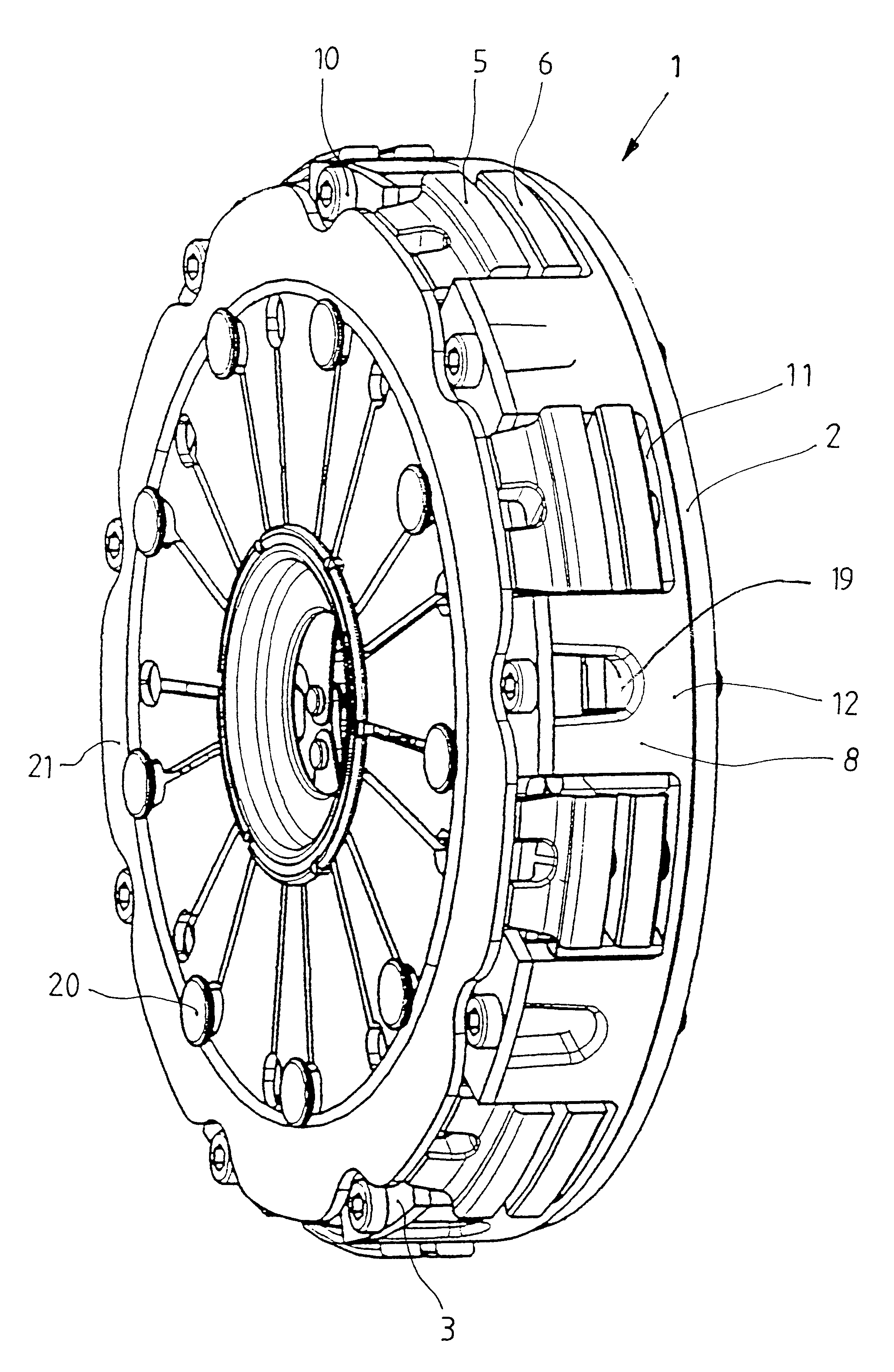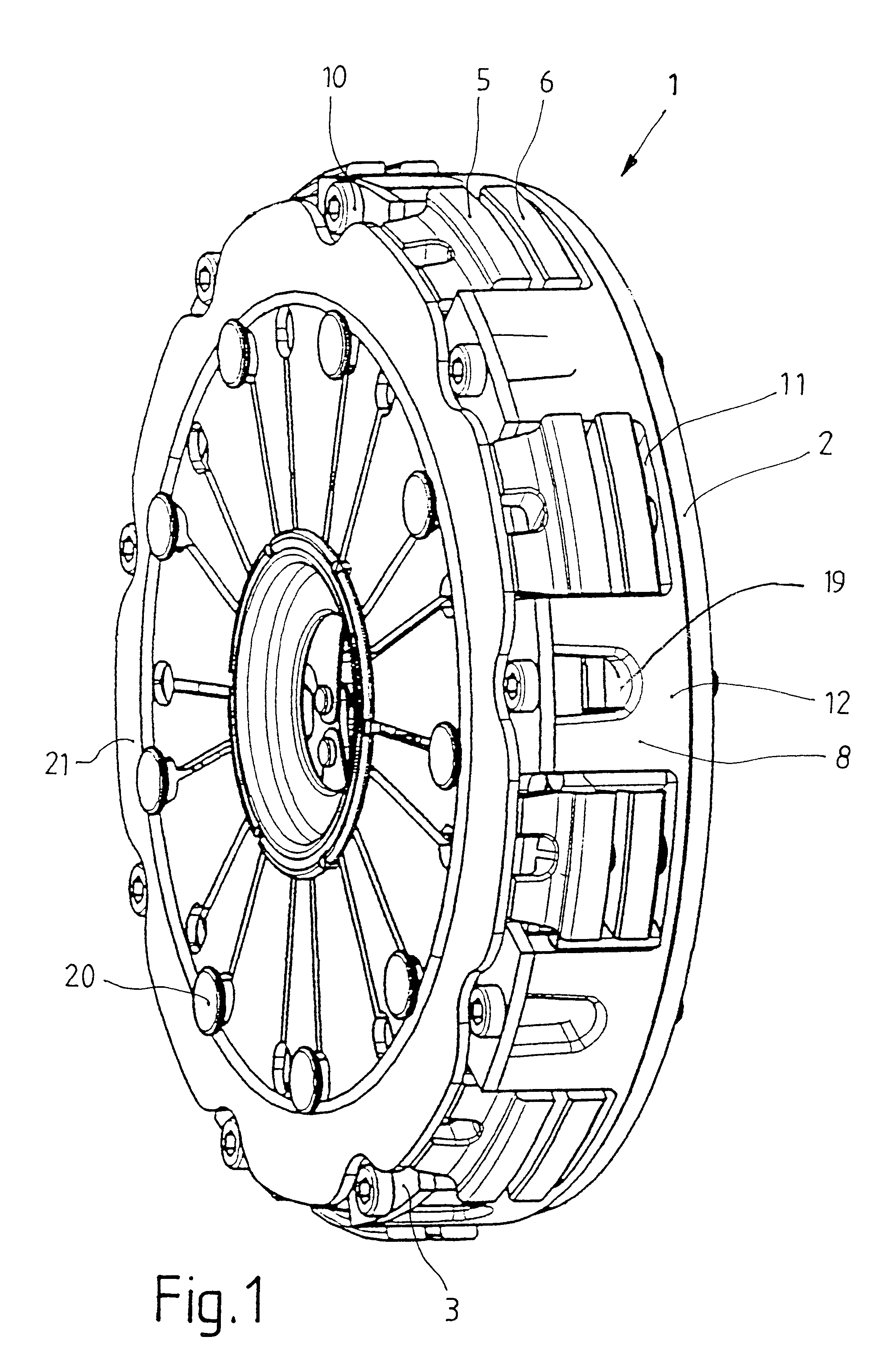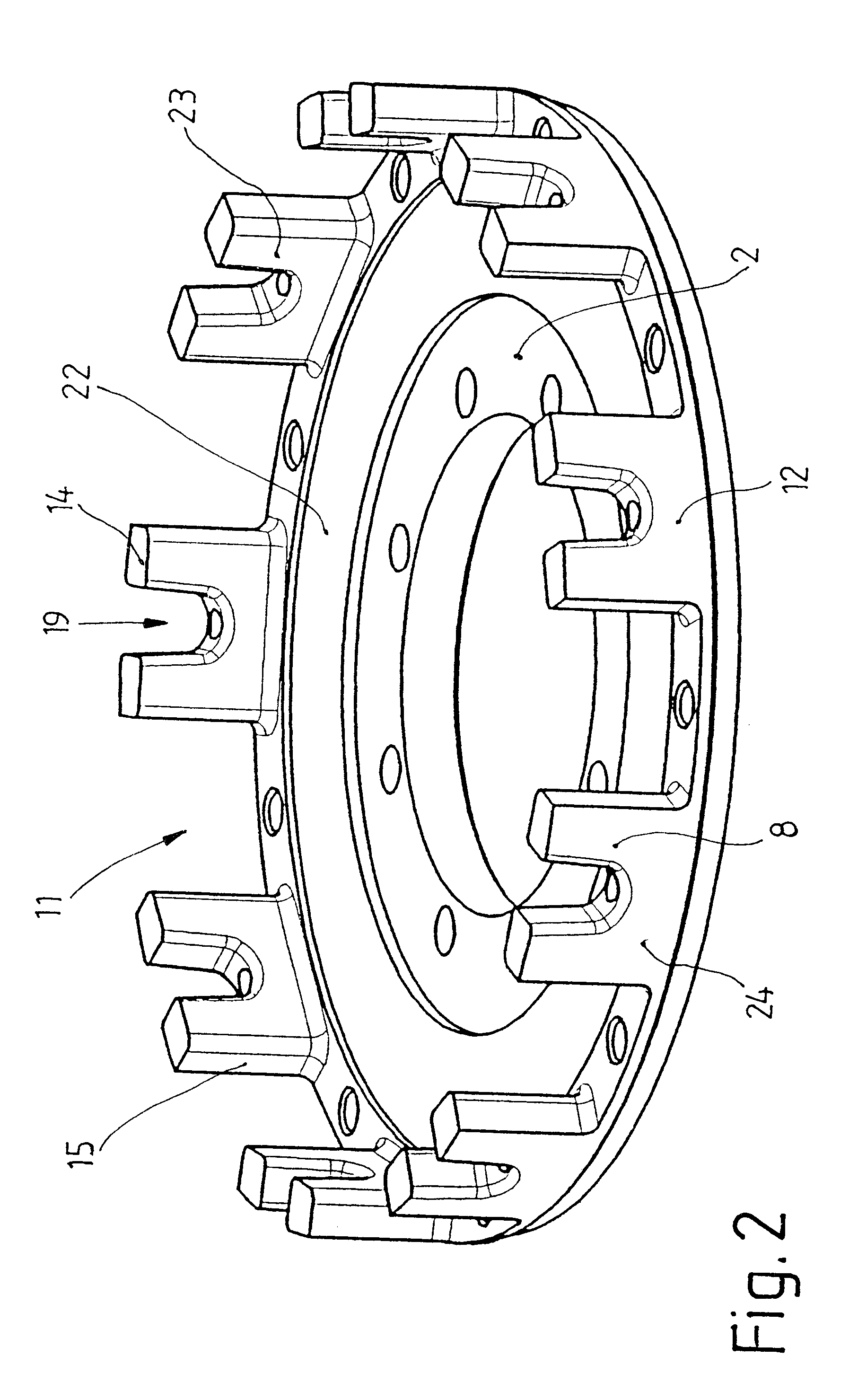Friction clutch
a clutch and friction technology, applied in the field of friction clutches, can solve the problems of complex multi-stage process, limited cooling air supply to the interior of the clutch, and clutch overheating,
- Summary
- Abstract
- Description
- Claims
- Application Information
AI Technical Summary
Benefits of technology
Problems solved by technology
Method used
Image
Examples
Embodiment Construction
The friction clutch 1 shown in perspective in FIG. 1 consists primarily of an input part 2, which is flanged to the crankshaft of an internal combustion engine; a housing 3, which is attached to the end surface of the input part; and a stored energy element in the form of diaphragm spring 21, which is supported against the axial side of the housing by spacer bolts 20 so that the spring is free to move back and forth. This diaphragm spring 21 acts on knife edges formed on the pressure plate 5 and thus presses the plate in the engaged state against the clutch disk. With respect to its design and function, the friction clutch 1 shown here corresponds for the most part to the friction clutch described in U.S. Pat. No. 6,409,002, the content of which is incorporated herein by reference.
The housing 3 shown in FIG. 3 is connected to the input part 2 by fastening means, which are designed here as screws 10. These screws pass through attachment holes in the radially outer tabs of the housing...
PUM
 Login to View More
Login to View More Abstract
Description
Claims
Application Information
 Login to View More
Login to View More - R&D
- Intellectual Property
- Life Sciences
- Materials
- Tech Scout
- Unparalleled Data Quality
- Higher Quality Content
- 60% Fewer Hallucinations
Browse by: Latest US Patents, China's latest patents, Technical Efficacy Thesaurus, Application Domain, Technology Topic, Popular Technical Reports.
© 2025 PatSnap. All rights reserved.Legal|Privacy policy|Modern Slavery Act Transparency Statement|Sitemap|About US| Contact US: help@patsnap.com



